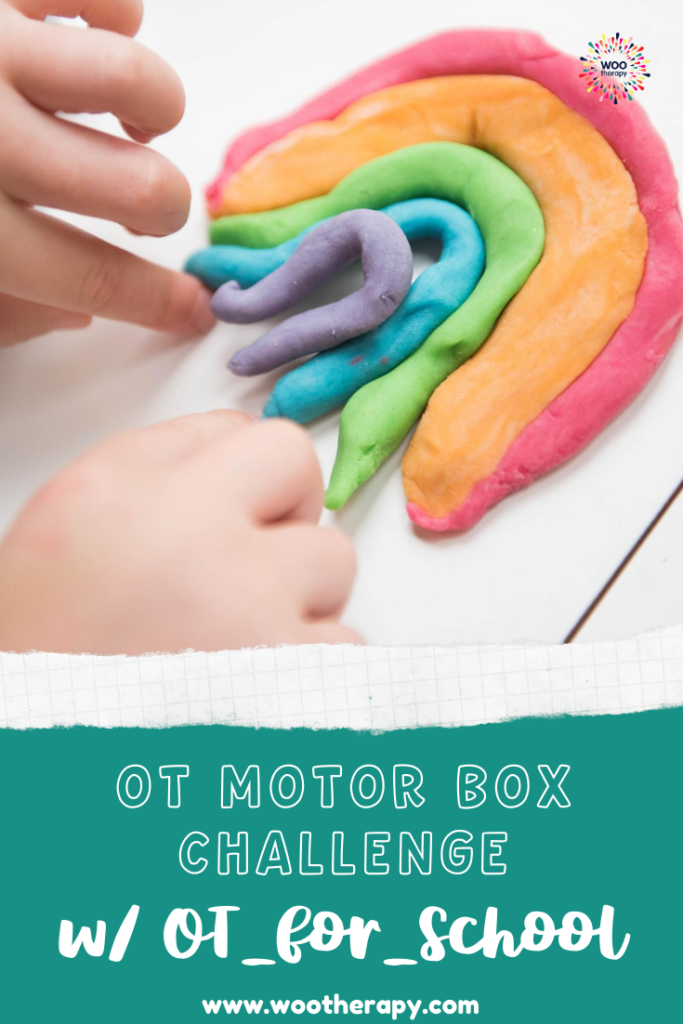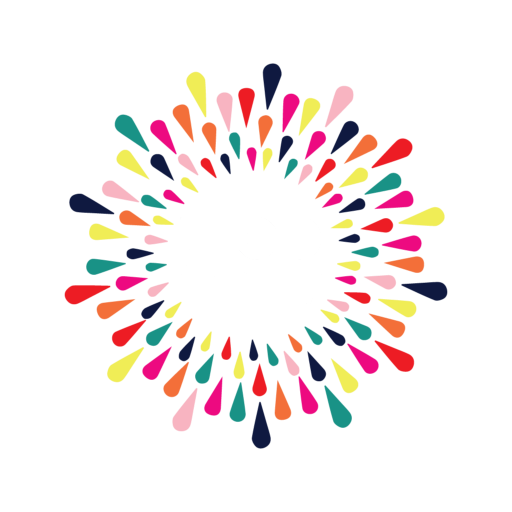Hello from OT_FOR_SCHOOL! We are Heather COTA/L & Maggie MS OTR/L. We have worked in the school-based setting including an autism program, mental health program, multiple disabilities classrooms, self-contained, and general education, as well as post-grad students. The goal of OT_FOR_SCHOOL is to provide teachers, OTs, and parents with motivating activities addressing skills important for progress in the classroom & beyond.
We made our list with cost in mind. These items can be used in a variety of ways during sessions, but can also be used when the camera is off and the family is looking for something fun to do! The items can be easily used in conjunction with school work provided by the teacher or school district. Sometimes it’s the simple things that can be transformed into the most fun with the creative eye of an Occupational Therapist!
You can follow us @ot_for_school on Instagram for great skill-building ideas and school-based accommodations.

OT for School Challenge Items
1. Bean bag
- throw at target to knock down
- toss to a letter then write the letter
- toss in air and catch
- play catch with someone
- squeeze for strengthening or stress relief
2. Dry erase cube
- write words on it then roll to have the student write the words
- write numbers on it to see how many of each letter they have to write
- draw parts of the body on it to wiggle or stretch
- have student manipulate in their hands then erase when they find the target letter/word

3. Beach ball
- write words/letters/numbers with dry erase marker, find it, erase, then write
- use in midline crossing game imitating the therapist
- toss in the air and catch independently or with someone else
- “walk” the ball up and down the wall
4. Clothespins
- write letters/numbers/words on the edge of paper/cardboard and put clothespins on target
- use as tongs to grab crumpled paper balls
- put stickers on the clothespins and put on edge of box
- clip onto their shirt and have student locate and remove all of them
5. Playdoh
- build letters/numbers/words from (or on top of) a model
- use kitchen tools to squish or cut for strengthening
- squeeze for strengthening or stress relief
- draw a person then form clothes/body parts for body awareness
- hide coins in it and pull them out

6. Sandpaper
- use a little piece to rub fingers on as a sensory break
- trace letters/words for sensory feedback

7. Ice cube tray
- use small sponge or water dropper to fill holes
- hold small items in hand and place one item in each holder
- use to sort small items
- flip over and put elastics around bumps

8. Bag of assorted small erasers
- use with icetray to put in holes
- hide in playdough
- rotate in full circles with fingers
- put in a bottle with rice for I-spy game
- see if you can trace them for a tricky fine motor task
9. Plastic dry-erase sleeve
- reuse pages from activity books (dot to dot, tracing, I-spy…)
- use small sponge square to trace along drawn lines
- tape to the wall with painter’s tape for a vertical writing surface
- use as a mat for playdough with letters to build written on inserted paper
- make a checklist to have the student check off activities as you do them

10. Dry erase markers
- write on fun/new surfaces (tiles, table, plastic sleeve, plastic plate…)
- draw on a plate then slowly pour water to lift and float drawing
- have student erase target lines (letters/numbers) rather than write for improved adherence to target line

11. Mr. Clean sponge (or different sponge, they are just the best)
- erases dry erase marker on a variety of surfaces
- cut up small to erase chalk writing
- regular sponge- cut into small pieces and squeeze water into target location (could be ice cube tray)
12. Straws
- cut into pieces to use as beads
- use as a water dropper by putting in water then putting finger over the top
- use to blow small/light items towards the target (cotton balls towards letters written on paper)
- blow light items through a drawn maze or along a line
- use for emotional regulation breathing activities
13. Popsicle sticks
- make task box with a shoebox, put stickers on the top of the popsicle sticks to make a scene then write about it
- write letters or words on them, put in a hidden box/bag and pull out on at a time to write what is on them
- use to assist in spacing between words
- build straight-line letters /or/ use with playdough to build letters having rounded components (playdough rolled out to make rounded parts)
- use as a tool to dig through playdough
- use them as a writing tool when writing in salt
- copy shapes

14. Painter’s tape
- hold the paper down when writing/coloring
- pull off of the table for fine motor strengthening and pincer
- pull off of rug in quadruped
- use as start/finish lines in gross motor/yoga activities
- make targets on the floor for throwing beanbags
- tape words/letters/numbers to the wall and have student grab then match on the table (trunk rotation)
15. Adapted paper /or/ tool to adapt worksheets at home such as WooTape
- This allows you to specialize for each student. School district or teacher provided worksheets need to be easily adapted at home to best suit the students’ needs. The home might not have a photocopier/printer (OT_FOR_SCHOOL typically uses modified writing paper to cut up and photocopy on worksheets) so having a stack of paper the student can use to write on is necessary.
- A tool like WooTape allows the family to easily modify directly on the worksheets provided. If possible, this is preferred because having two pages (original worksheet in addition to adapted paper) can be tricky for students.
Thank you, OT_FOR_SCHOOL, for putting together such a fun and thoughtful list!

Leave a Reply